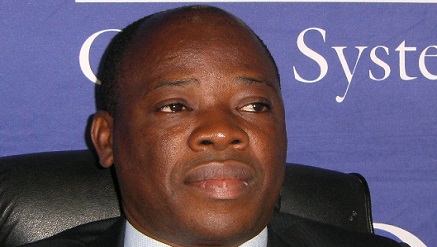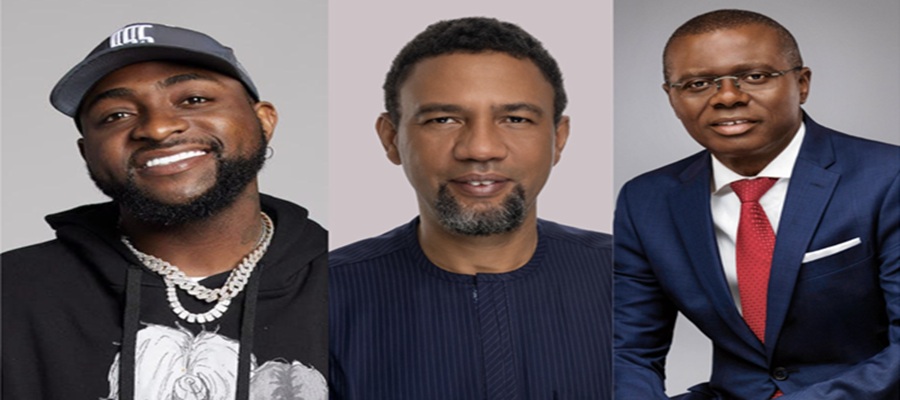Broadcasting
The Coming Digital TV Revolution

Except something unexpected happens, by July 31 next year, all analogue TV transmission in Nigeria will cease. Essentially all our existing TV stations – Channels, NTA, State TV stations and several others will cease to broadcast signals that can be directly received on our television sets.
The world is transiting to digital TV broadcasting and July 31, 2015 has been set as Nigeria’s cut over date. Every television signal will have to pass through a set top box or decoder before being received by a television set.
The most obvious impact is that Nigeria will have to spend an estimated 700 billion naira to purchase decoders if they plan to continue watching television!
The big question is how will this come about? Can Nigerian families really afford this, should they spend that much and what can anyone do to ameliorate the expenditure. The elephant in the room question is will it all be worth it?
To answer this question, let us look at the digital satellite TV service currently in the works from CWG and SES. SES is one of the leading communication satellite operators in the world.
Her fleet of satellites include the Astra 2G craft whose foot print on the ku-band covers Nigeria and the rest of West Africa with high fidelity signals. SES also has considerable expertise in digital broadcast including operating the HD+ high definition service in Germany as well as being the partner of choice for a variety of other operators. SES’ expertise extend beyond satellites to also include content management and integration into worldwide content distribution networks. CWG has been SES partner in data communications for the past 20 years.
CWG operates both a teleport for the upload of signals to SES satellites as well as a Tier 3 Data Centre that provide hosting services for storage and management of content and signals.
CWG and SES have introduced a service that allows any broadcaster to broadcast digital satellite signals that will be received using a variety of standard decoders.
These signals will be received all over Nigeria and West Africa. The broadcasters will not need to change their existing equipment but will only need to make minor investment in digital encoders and they are good to go.
This means for instance that Zamfara state TV can be received all over Nigeria as well as Osun State TV or Channels TV. IT means State TV broadcasting stations will no longer need to invest in expensive repeater stations in order to cover their states.
The Enugu man in Lagos will happily see Enugu State TV in Lagos as well as the Enugu State man can easily see Lagos State TV.
This is a staggering saving and expansion of reach for the regional or local broadcasters without the attendant significant cost outlay.
For this alone, the television viewer will have received the value of digital television. Consider that as at today, it is impossible to keep up with local news if you leave the locality.
The CWG and SES service introduces a totally new dimension to television broadcasting. They are making it possible for any content owner – say a movie producer or a journalist or entertainer or school or church or consultant or government entity – to be able to broadcast 24 hour television which is viewable anywhere in Nigeria.
We could be watching National Assembly TV as easily as we could be watching Open University TV or Catholic TV or NAFSAT TV. This is achievable because the CWG/SES system can accept live content as well as recorded content. It can also broadcast standard definition as well as high definition picture quality. We should be expecting an explosion of content of various forms.
TV can be used for not only entertainment but also for education. China’s education system utilizes TV heavily to reach remote locations with standard curricula.
This can also be the case in Nigeria. Our falling standard of education can benefit a lot from standard curricula delivered by properly equipped teachers to all school classrooms. This immediately reduces variation in the quality of teaching and also improves the quality of the teachers.
The coming digital television revolution will bring incredible value and opportunities for both viewers, broadcasters and other content owners. CWG and SES aim to be at the centre of this revolution, working with other stakeholders to make the switch to digital TV worth every effort and expense.
Broadcasting
Davido, Babajide Sanwo-Olu, Karl Toriola, Others To Be Honoured At The Most Influential People of African Descent Awards In Lagos

Most Influential People of African Descent (MIPAD) is excited to announce the Lagos Diaspora Experience 2025, a week-long celebration of African art, culture, innovation, and connection, culminating in the End of the Year Awards & Celebration on Sunday, December 21st, 2025, in Lagos, Nigeria.

The Most Influential People of African Descent Awards
This historic occasion marks the first time the world-famous Most Influential 100 Recognition & Awards Ceremony—traditionally held in New York on the sidelines of the United Nations General Assembly (UNGA)—will be hosted in Lagos, Nigeria.
The week will feature events such as Diaspora Day at the Fela Exhibition (Afrobeat Meets Diaspora), Cultural Heritage Day, and Business Leadership Luncheons, all culminating in the awards celebration.
The evening will honor the Best & Brightest of the Year, recognizing exceptional individuals and institutions whose work has advanced Global African Achievement and Black Excellence across business, government, media, culture, and technology.
Key Recognitions for 2025
– Governor of the Year & City of the Year: His Excellency Babajide Sanwo-Olu, Governor of Lagos State, honored alongside Lagos as City of the Year for its global leadership in culture, innovation, tourism, and diaspora engagement.
– Her Excellency Hannatu Musa Musawa, Minister of Art, Culture, Tourism and Creative Economy, will be honoured as Minister of the Year for her contribution to the creative economy’s role in nation branding and cultural diplomacy.
– Most Influential Woman of the Year: Olorì Atúwàtse III, Queen Consort of the Warri Kingdom
– Most Influential Man of the Year: Adewale Tinubu, Group Chief Executive, OANDO
– CEO of the Year: Karl Toriola, Chief Executive Officer of MTN Nigeria; who will deliver a keynote address, recognized for his transformative leadership and impact on Nigeria’s telecommunications and digital economy.
Others include; Karl Toriola of MTN as CEO of the year, Uche Pedro of Bella Naija as Lifestyle Personality Of The Year, Ojy Okpe of Artise News as Most Influential News Anchor Of The Year, Stephanie Busari as Media Executive of the Year, Kayode Okikiolu as Pressman of the year, Davido as Artist of the year and several others.
In celebrating this year’s honorees, Michael Ehindero, Managing Director, Pernod Ricard Nigeria, owners of Martell Cognac, who emerged as Brand Of The Year expressed deep appreciation for the brand’s continued global recognition, saying: “It’s a great reward for the team who’s delivered Martell excellently in Nigeria over the years.
“We say thank you to the teams, we say thank you to our consumers and we say thank you to MIPAD.
“Martell has a lot of promising experiences in the years to come in Nigeria and with this we invite you over to Nigeria to experience Detty December”.
The ceremony will also celebrate the achievements of the Class of 2025 Honorees, alongside past Nigerian honorees who were unable to attend their year of recognition in New York.
“For the first time, we’re bringing our world-famous recognition platform home to celebrate excellence within the Global Africa Family — right here in Lagos,” said Kamil Olufowobi, Founder & Chairman of MIPAD. “This is more than an event; it’s a movement uniting the best of us — connecting, collaborating, and working together to change the world.”
Event Details
📍 Lagos, Nigeria
– Friday, Dec 19 – #DettyDec Diaspora Day at Fela Exhibition FREE
– Sunday, Dec 21 – End of Year Recognition & Award Ceremony STRICTLY BY INVITATION
🎟️ RSVP: https://rsvp.oakenevents.com/mipad
Broadcasting
NCC Blocks Piracy Sites as Nollywood Faces Rising Digital Theft

Nigerian Copyright Commission (NCC) has called for urgent adoption of advanced digital protections after blocking seven piracy sites amid escalating online threats to Nollywood content.

The call was made during a webinar hosted by Greychapel Legal titled “Clicks, Streams, and Copyright: Who Owns Nollywood’s Digital Future?”, which brought together filmmakers, regulators, entertainment lawyers and media strategists to examine how content ownership and copyright enforcement are being reshaped by the digital age.
Lynda Alphaeus, director and head of the NCC Lagos Office, said the Commission has intensified its efforts to combat piracy across digital channels and is upgrading its operations to meet emerging threats.
According to her, Nigeria’s new Copyright Act was deliberately updated to strengthen creators’ rights amid the explosion of online distribution.
“NCC has worked, and is still working tirelessly to adapt Nigeria’s legal framework to cope with digital distribution challenges. We now have the power to block networks publishing illegal content, and we have already blocked seven websites distributing pirated Nigerian works,” Alphaeus said.
She revealed that the Commission has established a special taskforce known as the STOP Unit to coordinate anti-piracy operations online, alongside new awareness campaigns targeting local markets and schools to educate content creators and the public on copyright obligations.
Alphaeus urged filmmakers and producers to take ownership of their digital safety by deploying available technological protections to safeguard their intellectual property.
She explained that tools such as encryption help prevent unauthorised copying, blockchain technology offers immutable proof of ownership, digital watermarking allows creators to trace illegal uploads, while cloud security and regular offline backups protect creative files before they reach the market.
While noting that copyright in Nigeria does not legally require registration, she stressed that registering one’s work strengthens protection and provides legal presumptions that can be vital in enforcement.
“Whatever you register is presumed to be yours until proven otherwise,” she said, urging creators to invest in copyright knowledge as part of their business strategy.
Other speakers at the webinar reinforced the urgency of protecting Nollywood’s digital assets.
James Omokwe, film director, noted that while streaming platforms have created unprecedented opportunities for visibility and monetisation, they have also opened new vectors for intellectual property theft and unauthorised redistribution.
Solafunmi Laelle, media strategist, added that audience data, which streaming platforms rely heavily on, will increasingly determine leverage and value in film licensing negotiations.
According to her, creators who lose control of their intellectual property, whether through piracy or unfavourable contracts, also lose access to valuable data that could shape their long-term earnings.
Nky Ofeimun, entertainment lawyer, emphasised the need for creators to understand the contractual implications of ownership, platform exclusivity, and reversion rights.
She noted that many filmmakers still underestimate how quickly digital copies can be illegally duplicated or uploaded once control is lost.
The panelists agreed that as Nollywood deepens its digital footprint, piracy will continue to evolve and become more sophisticated.
They stressed that the industry must respond with equally sophisticated tools, stronger contract negotiation, and improved education around copyright.
Broadcasting
Four Must-Watch African Films Debut Free on Glo TV

Globacom, just introduced four brand new movies on its premium entertainment platform, Glo TV, and they are completely free for all subscribers. The company says the release marks another major step in its mission to enrich digital entertainment for millions of viewers across the country.

In a statement from Lagos on Wednesday, Globacom explained that the new titles feature some of Africa’s most celebrated actors and filmmakers, offering a colorful mix of romance, comedy, drama, culture, and emotional storytelling. The lineup includes Johnny Just Come (JJC), Eko Vibes, Bound, and Shifting Desire.
“Each of these movies was chosen to spotlight diverse African stories while delivering world class entertainment unavailable in cinemas, on YouTube, or on any other streaming service. Viewers do not need any subscription or extra payment. Access is completely free,” the company said.
Leading the pack is Shifting Desire, featuring Lilian Afegbai and veteran actor Majid Michel. The film is a gripping romantic drama that dives into marriage, intimacy, betrayal, healing, and the emotional journey of a couple using therapy to rebuild trust. Shifting Desire premiered on Glo TV on December 2 and is already streaming for free.
Johnny Just Come (JJC), starring Patience Ozokwor and Nancy Isime, delivers a hilarious cultural crossover story about an American man trying to navigate love and marriage in an African household. The movie explores themes of identity, family, culture, and coexistence in a warm and relatable way.
The third title, Bound, starring Rita Dominic and Eyinna Nwigwe, is a thought-provoking family drama that follows a successful career woman confronting long hidden personal struggles and the impact on her relationship. The film showcases powerful performances from some of Nollywood’s finest.
Rounding out the collection is Eko Vibes, featuring Broda Shaggi, Josh2Funny, and Nkechi Blessing. The movie captures the energy and hustle of Lagos youth culture, spotlighting ambition, humor, and the vibrant spirit of young people chasing success in the city.
Globacom noted that the new releases reinforce its commitment to delivering original African content at the highest quality. “With these exclusive titles, Glo TV is redefining digital entertainment in Nigeria by offering fresh, premium movies not available anywhere else. We remain committed to growing our catalog with rich African stories that celebrate creativity at its best,” the company added.

 E-Financial1 day ago
E-Financial1 day agoPreventing Financial Crimes Amid Mounting Insecurity: Why Following the Money is Now a Survival Imperative

 E-Financial1 day ago
E-Financial1 day agoSupreme Court Clears Fidelity Bank in ₦225bn Sagecom Saga

 E-Financial1 day ago
E-Financial1 day agoUnion Bank Clinches Top Workplace Practice Honour at Sustainability Awards

 Telecom1 day ago
Telecom1 day agoNITDA Charts Path for Kano as Innovation Hub

 Broadcasting20 hours ago
Broadcasting20 hours agoDavido, Babajide Sanwo-Olu, Karl Toriola, Others To Be Honoured At The Most Influential People of African Descent Awards In Lagos

 General News1 day ago
General News1 day agoCellulant Taps Freddie Oduro to Lead Enterprise Payments Expansion in Ghana

 Telecom9 hours ago
Telecom9 hours agoNCC Blames NOGASA for Abuja Outage

 News9 hours ago
News9 hours agoSiBAN New Executive Council to Champion Vision for Nigeria’s Digital Economy

























